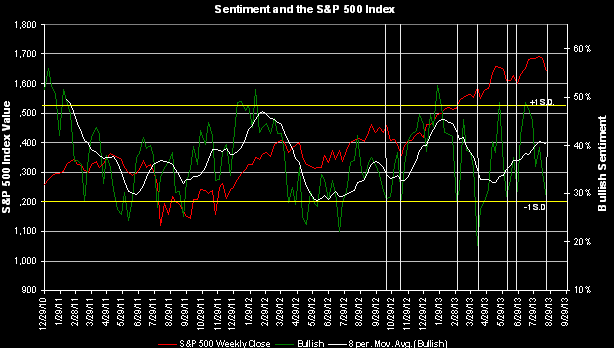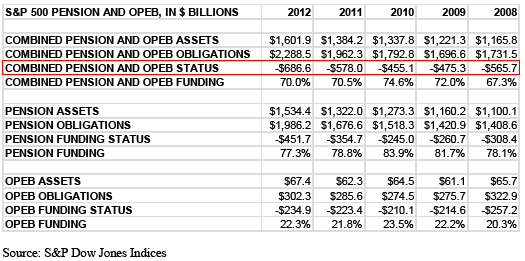 |
| From The Blog of HORAN Capital Advisors |
 |
| From The Blog of HORAN Capital Advisors |
Posted by
David Templeton, CFA
at
5:40 PM
0
comments
![]()
![]()
Labels: General Market , Technicals
Posted by
David Templeton, CFA
at
9:32 AM
0
comments
![]()
![]()
Labels: Week Ahead
 |
| From The Blog of HORAN Capital Advisors |
Posted by
David Templeton, CFA
at
9:20 PM
0
comments
![]()
![]()
Labels: Sentiment
It has been some time since I have seen so many market strategist laser focused on the fact the market has topped out and appears to be rolling over. It isn't a frequent occurrence when strategist make perfect market timing calls. Certainly there is a great deal to worry about as we move into the second half of August and then the notoriously poor market months of September and October. Jackson Hole is this week, Fed tapering remains on the table, approaching elections in Germany in September, the need for Congress to deal with the debt ceiling all of which are enough to knock the life out of the bulls. Of concern to many, and rightfully so, is the fact this market seems to have moved higher unabated since the end of the financial crisis. Below are a few of the articles we have reviewed in advance of the coming week.
Posted by
David Templeton, CFA
at
12:05 PM
0
comments
![]()
![]()
Labels: Week Ahead
 |
| From The Blog of HORAN Capital Advisors |
 |
| From The Blog of HORAN Capital Advisors |
Posted by
David Templeton, CFA
at
12:35 PM
2
comments
![]()
![]()
Labels: General Market
 |
| From The Blog of HORAN Capital Advisors |
 |
| From The Blog of HORAN Capital Advisors |
There is a structural factor, the increasing importance of multinational corporations, that seems to be important because of the current taxation of the income generated abroad that domestic corporations bring back to the U.S. Here, fiscal policy may be playing an undesirable role, and its modification in the coming years could boost domestic investment and help overcome the slow recovery from the Great Recession.
There is also another role for fiscal policymakers in the near future. Although the magnitude of the effect is not clear, it seems that designing and communicating a long-run plan to deal with the increasing fiscal deficit would reduce uncertainty about future taxes, reduce abnormal cash holdings and potentially favor private investment.
Posted by
David Templeton, CFA
at
10:21 AM
0
comments
![]()
![]()
Labels: Economy , General Market
 |
| From The Blog of HORAN Capital Advisors |
 |
| From The Blog of HORAN Capital Advisors |
 |
| From The Blog of HORAN Capital Advisors |
 |
| From The Blog of HORAN Capital Advisors |
Posted by
David Templeton, CFA
at
11:55 PM
0
comments
![]()
![]()
Labels: General Market , Technicals
"The market always worries - or shall we say the traders and investors that comprise the market always worry. Worry, worry, worry - if you have money on the line then worry becomes part of your DNA.
This morning retail sales print stronger than expected and immediately the worry is the Fed will pull QE in September or at least start shutting down the program. Let's worry shall we.
I don't mean to sound nonchalant about the possibilities but Wall Street (read investors and traders) do not like anything that resembles uncertainty and with everyone of the belief that quantitative easing is the only reason this market is at these highs, well you can understand the reason for worry.
I can remember a time not so long ago where "bad news" was good as was" good news". It almost feels as if we are shifting to "good news" is bad as is "bad news". The glass is half empty - not half full.
The next few weeks look to be challenging as the uncertainty is set to grow - not diminish. Elections in Germany, QE going away, budget battles looming, etc. You can see the uncertainties growing and that is likely to bring volatility and pressure on these markets. That pressure is actually needed for it will lead to tests that let us measure and measurement is how we determine what is next."
Posted by
David Templeton, CFA
at
10:36 PM
0
comments
![]()
![]()
Labels: General Market , International
Starting this weekend, on Sunday, we will attempt to provide links to a few articles we read last week and article links we believe our readers might find of interest for the week ahead. Below are the links for our initial list.
Posted by
David Templeton, CFA
at
1:17 PM
0
comments
![]()
![]()
Labels: Week Ahead
"...the amount of assets that S&P 500 companies set aside to fund pensions and OPEB amounted to $1.60 trillion in 2012, covering $2.29 trillion in obligations with the resulting underfunding equating to $687 billion, or a 70.0% overall funding rate."
 |
| From The Blog of HORAN Capital Advisors |
 |
| From The Blog of HORAN Capital Advisors |
Posted by
David Templeton, CFA
at
10:30 PM
0
comments
![]()
![]()
Labels: General Market